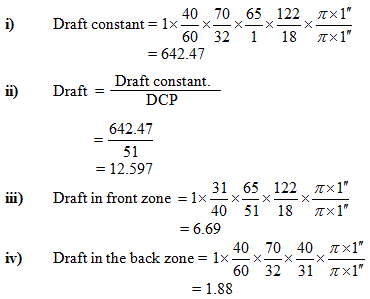Experiment Name: Study on ring doubling frame
1.Spindle speed, front roller delivery.
2.Twist, twist Constant.
Objects:
1) To combine two or more single threads into one.
2) To insert sufficient amount of twist for holding the yarns.
3) To increase strength, smoothness and luster.
4) To reduce hairiness.
5) To make sewing thread.
6) To wind a suitable bobbin.
Main parts:
1.Spindle speed, front roller delivery.
2.Twist, twist Constant.
Objects:
1) To combine two or more single threads into one.
2) To insert sufficient amount of twist for holding the yarns.
3) To increase strength, smoothness and luster.
4) To reduce hairiness.
5) To make sewing thread.
6) To wind a suitable bobbin.
Main parts:
- Creel stand and creel.
- Front roller.
- Yarn guide.
- Ring and ring rail
- Tin cylinder.
- Traveller.
- Thread weight or slip roller.
- Lappet Spindle.
Specification:

- Motor rpm = 1430
- Motor pulley diameter = 6.25²
- Machine pulley diameter = 10.25²
- Tin cylinder diameter = 10²
- Wharve diameter = 1.37²
- Cylinder carrier wheel = 24T
- TCP carrier wheel = 62T
- TCP = 63T
- Front roller diameter = 2’’

Gearing diagram of doubling frame:
 |
| Figure: gearing diagram of doubling frame. |
1) Spindle speed = 6461.59 rpm
2) Twist constant = 1235.25
3) Front roller delivery = 319.143 inch/min.
4) Existing TPI = 20
5) Production = 14.37 lb/shift/frame.
6) Required TPI = 16.266
7) Required TCP =76.25T
Conclusion:
By this experiment we come to know about various parts and working principle of ring doubling frame. This machine is important for producing double yarn on sewing thread.



























0 comments: